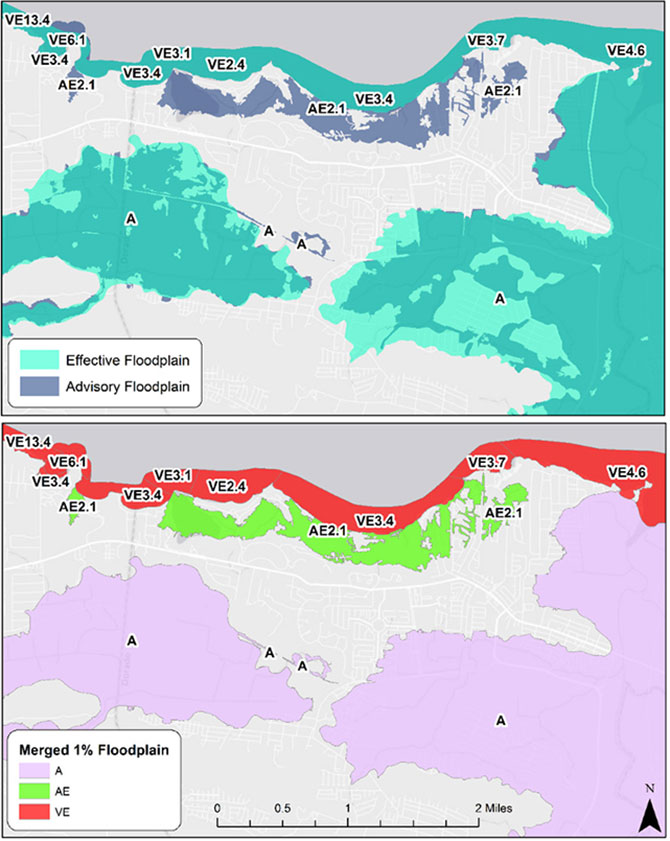Hurricanes Irma and Maria devastated the island of Puerto Rico in September 2017. New building codes were adopted in 2018 to help create a safer, stronger, and more resilient island as it recovers and rebuilds.

According to the Federal Emergency Management Agency (FEMA), only 31% of natural hazard-prone jurisdictions have adopted a hazard-resistant building code. It’s estimated that buildings designed to meet building codes result in a national benefit of $11 for every $1 invested.
Puerto Rico recently established the Construction Codes Committee, composed of representatives from the Construction Council of Puerto Rico, regulatory government agencies, and FEMA. The committee was responsible for the review and transition from the
2011 to the 2018 edition, which is known as Puerto Rico Codes 2018.
The updated building code is composed of ten topics from the 2018 family of the International Codes® of the ICC (2018 I-Codes®), with local amendments, including the Puerto Rico Building Code (PRBC) and Puerto Rico Residential
Code (PRRC).
Impactful Code Revisions
Significant revisions were incorporated into the PRBC. It provides new wind speed and seismic design category maps, more restrictive design requirements for storm shelters and critical facilities, introduces requirements for the installation of residential
photovoltaic panels, and requires the use of more resilient and energy-efficient materials.
Our Role in the Updates
We provided assistance to FEMA and its partner, the Commonwealth of Puerto Rico, to review and adopt the 2018 PRBC and PRRC. Our efforts included participation in public hearings and Code Adoption Committee meetings on behalf of FEMA Region II and the
FEMA HQ Building Science Branch. Our team submitted six code change proposals, which were adopted into the 2018 PRBC and 2018 PRRC.
One of the adopted proposals that I worked on requires the use of corrosion resistant materials or protection for all exposed structural members, connections, fasteners, metal straps, and anchoring mechanism for partially sheltered exterior exposures
and boldly exposed exterior exposures. This requirement should help combat the extremely corrosive environment of Puerto Rico and enhance the resilience of residential and non-residential structures on the island.

Homes and other buildings were severely damaged and destroyed when Hurricanes Irma and Maria hit the island in the fall of 2017.
We led the development of several supporting documents that describe the changes in the flood, wind, and seismic provisions between the 2011 and 2018 versions, as well as a cost and constructability report to illustrate the differences in costs resulting
from the adoption of the new codes.
Our team facilitated more than a dozen presentations and building science trainings to FEMA mitigation staff, local hires, and other local stakeholders. We developed pre-design construction plans for three typical residences in Puerto Rico. These plans
are intended to be hosted by the Puerto Rico Office of Permit Management and given to the local residents once a building permit has been obtained. Moderate to low-income families will be able to live in a residence designed to the latest building
codes without having to pay an architect or engineer for the plans.
New Technology, New Building Codes
Microzone Wind Speed Maps are being used to determine basic wind speeds throughout the Commonwealth. These maps take into account wind speed effects due to topographic features across Puerto Rico, producing more accurate results.
Funded by FEMA and led by the joint venture STARR II, the wind speed-up data was developed through a wind tunnel study of Puerto Rico topography. Using more accurate wind speeds for wind load calculations will significantly reduce damage and reconstruction
efforts after future storms.

As part of STARR II, we prepared advisory engineering data and GIS mapping for both the coastal and inland areas of Puerto Rico. These will be used to increase resilience and reduce vulnerabilities in the future.
The Future
The future of building codes will be decided by innovations in hazard-resistant construction materials and advancements in construction design concepts. We are at the forefront of the hazard-resistant construction materials movement by leading FEMA’s
standardization efforts with ASTM International to determine the flood damage resistance of construction materials found in flood-prone areas.
By creating stronger building codes and more resilient communities after natural disasters strike, communities will be prepared and safer if another disaster hits.